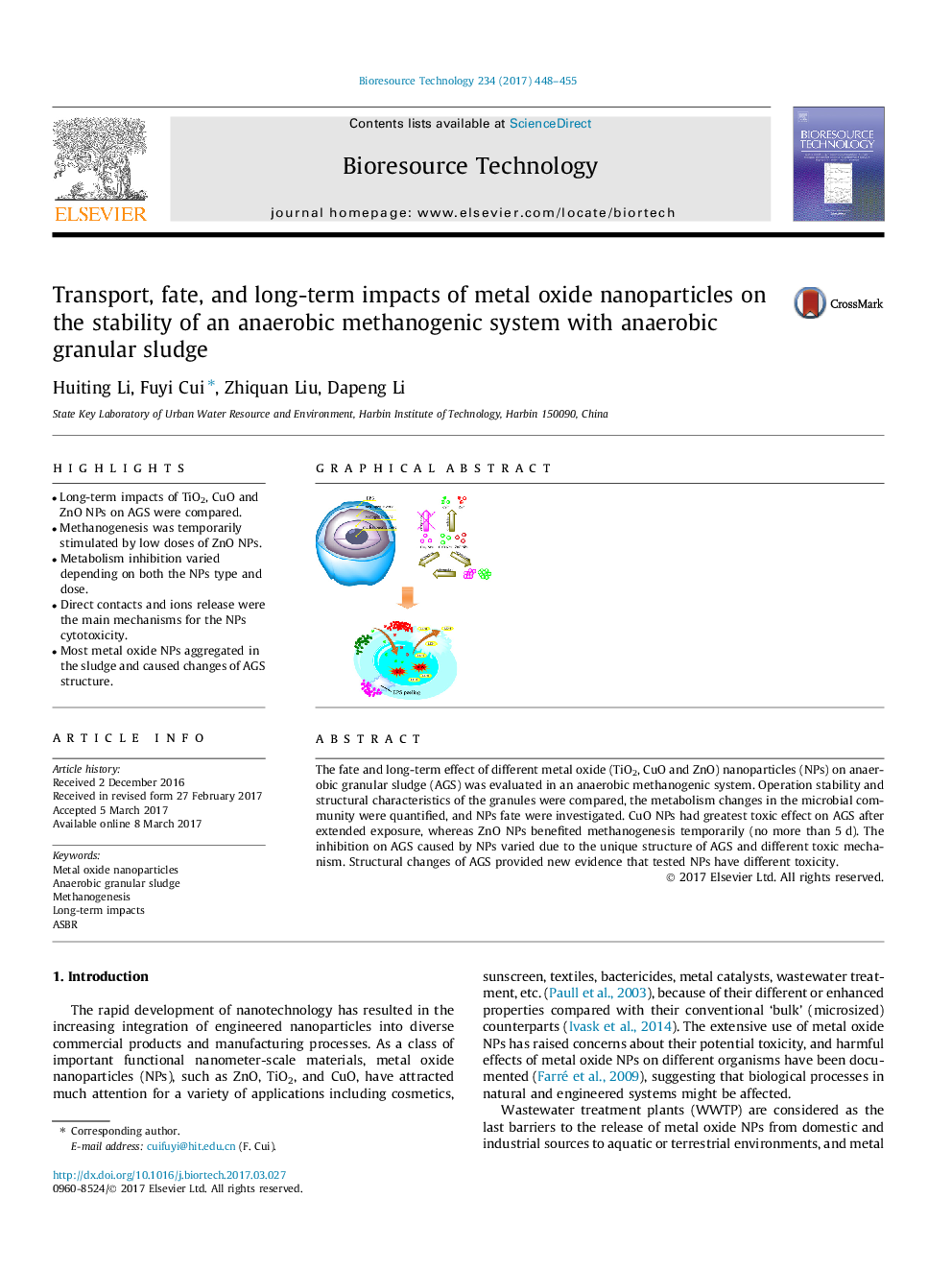| Article ID | Journal | Published Year | Pages | File Type |
|---|---|---|---|---|
| 4997318 | Bioresource Technology | 2017 | 8 Pages |
â¢Long-term impacts of TiO2, CuO and ZnO NPs on AGS were compared.â¢Methanogenesis was temporarily stimulated by low doses of ZnO NPs.â¢Metabolism inhibition varied depending on both the NPs type and dose.â¢Direct contacts and ions release were the main mechanisms for the NPs cytotoxicity.â¢Most metal oxide NPs aggregated in the sludge and caused changes of AGS structure.
The fate and long-term effect of different metal oxide (TiO2, CuO and ZnO) nanoparticles (NPs) on anaerobic granular sludge (AGS) was evaluated in an anaerobic methanogenic system. Operation stability and structural characteristics of the granules were compared, the metabolism changes in the microbial community were quantified, and NPs fate were investigated. CuO NPs had greatest toxic effect on AGS after extended exposure, whereas ZnO NPs benefited methanogenesis temporarily (no more than 5Â d). The inhibition on AGS caused by NPs varied due to the unique structure of AGS and different toxic mechanism. Structural changes of AGS provided new evidence that tested NPs have different toxicity.
Graphical abstractDownload high-res image (145KB)Download full-size image
